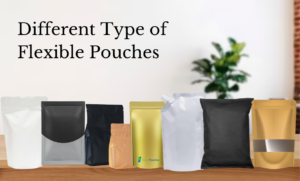In the digital age, e-commerce has revolutionized the retail industry, offering convenience and accessibility to consumers worldwide. The demand for product packaging solutions to handle shipping and logistics, as well as to create a unique customer touchpoint, has grown alongside it, with a total market value of $61.55 billion dollars expected by 2025.
However, with the growth of online retail comes the unique challenge of packaging products for safe and efficient shipping. Packaging solutions for e-commerce must not only protect the products during transit but also align with sustainability goals and enhance the overall customer experience.
So, how can businesses ensure that their packaging solutions meet the ever-evolving needs of e-commerce? This article explores the challenges faced by online retailers, basic requirements for packaging and discusses effective packaging solutions to meet the demands of e-commerce.
The Challenges of E-commerce Packaging
-
Product Protection
: One of the primary challenges of e-commerce packaging is ensuring the safe delivery of products to customers’ doorsteps. Unlike traditional retail, e-commerce packages often go through multiple handling stages, increasing the risk of damage during transit. Packaging must provide adequate protection to prevent breakage or damage caused by rough handling.
-
Dimensional Weight Pricing:
Many shipping carriers use dimensional weight pricing, which calculates shipping costs based on the size and weight of packages. This means that oversized or inefficiently packaged items incur higher shipping fees. Online retailers must optimize their packaging to minimize dimensional weight and reduce shipping expenses.
-
Sustainability:
Consumers are increasingly concerned about the environmental impact of packaging materials. E-commerce businesses face the challenge of balancing product protection with sustainable packaging choices. Finding eco-friendly alternatives that minimize waste and utilize recyclable or biodegradable materials is essential for meeting sustainability goals.
-
Brand Identity:
Packaging serves as an extension of a brand’s identity. In an e-commerce setting, where physical stores are absent, packaging becomes a crucial touchpoint for conveying brand values and creating a memorable unboxing experience. Online retailers must design packaging that aligns with their brand identity and leaves a positive impression on customers.
-
Unboxing Experience:
The unboxing experience plays a significant role in customer satisfaction and brand loyalty. E-commerce businesses must consider the presentation of their packages, including branding elements, inserts, and protective padding. A well-crafted unboxing experience can delight customers and encourage repeat purchases.
Packaging Requirements for E-commerce
To meet the challenges of packaging for online retail, companies must pay attention to the following requirements:
-
Durability:
The packaging must be strong enough to protect the product from damage during shipping.
-
Size and Weight:
Packaging material should be lightweight and fit the product securely, to not only save on shipping costs but also prevent the item from moving around during transit.
-
Brand Packaging:
Online retailers need to optimize packaging as an opportunity to market their brand. It should attract customers, provide a positive unboxing experience, and make a lasting impression on the consumer.
-
Sustainability
: Consumers have become more environmentally aware, and their preference for eco-friendly packaging is on the rise. Companies transitioning towards sustainable packaging not only appeal to consumers but also reduce their carbon footprint.
Effective Packaging Solutions for E-commerce
-
Right-sized Packaging:
Using packaging that closely matches the size of the product not only reduces dimensional weight but also minimizes the risk of damage during transit. Customizable packaging solutions, such as variable-depth boxes or padded mailers, provide a snug fit for products, ensuring better protection while optimizing shipping costs.
-
Protective Packaging Materials:
To safeguard products during shipping, online retailers should use appropriate protective packaging materials. Bubble wrap, air pillows, foam inserts, and corrugated dividers can provide cushioning and prevent movement within the package. These materials help absorb shocks and reduce the risk of damage.
-
Rigid Mailers:
Rigid mailers are stiff, flat pieces of cardboard that can protect small products like books, DVDs, and CDs during shipping. Rigid mailers are lighter and more cost-effective to ship than corrugated boxes. They are also eco-friendly since most rigid mailers are made from recycled material.
-
Eco-friendly Materials:
Embracing sustainable packaging materials is crucial for e-commerce businesses. Utilizing recyclable, compostable, or biodegradable materials demonstrates a commitment to environmental responsibility. Switching to eco-friendly options, such as recycled cardboard or paper-based alternatives, reduces the carbon footprint and aligns with consumers’ eco-conscious preferences.
-
Branding and Personalization:
Custom packaging allows online retailers to create a distinctive brand experience. Incorporating logos, colors, and unique designs on packaging materials helps reinforce brand identity and enhances brand recognition. Additionally, personalized messages or inserts can create a sense of connection with customers, fostering loyalty and positive word-of-mouth.
-
Easy and Secure Opening:
E-commerce packaging should be easy to open, ensuring a hassle-free unboxing experience for customers. Consider using tear strips, perforations, or easy-to-remove labels to facilitate access to the product while maintaining security during transit. This feature enhances customer satisfaction and reduces the risk of product damage during the unboxing process.
-
Multi-functional Packaging:
Innovative packaging solutions that serve multiple purposes can add value to the customer experience. For example, boxes with built-in handles or resealable features can provide convenience for customers while enabling them to reuse the packaging for storage purposes. Multi-functional packaging fosters sustainability and enhances customer satisfaction.
Conclusion
Packaging solutions for e-commerce must address the unique challenges posed by online retail. By focusing on product protection, dimensional weight optimization, sustainability, branding, and the unboxing experience, online retailers can meet customer expectations while maximizing operational efficiency. Investing in effective packaging solutions not only ensures safe product delivery but also contributes to a positive brand image and customer satisfaction in the e-commerce landscape.





